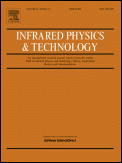
INFRARED PHYSICS & TECHNOLOGY
Scope & Guideline
Advancing the Frontiers of Infrared Research
Introduction
Aims and Scopes
- Infrared Spectroscopy and Sensing:
Research on various infrared spectroscopy techniques (e.g., FTIR, TDLAS) for detecting and quantifying substances, including gases, liquids, and solids, through non-destructive methods. - Laser Technology and Applications:
Development of novel laser systems, including solid-state and fiber lasers, focusing on their applications in material processing, medical diagnostics, and environmental monitoring. - Imaging and Detection Technologies:
Innovations in infrared imaging systems and algorithms for applications in surveillance, security, and remote sensing, including small target detection and tracking. - Thermal Analysis and Management:
Studies on thermal imaging techniques for monitoring temperature variations in materials, assessing thermal properties, and evaluating the thermal behavior of structures under various conditions. - Material Characterization and Development:
Characterization of materials using infrared techniques, including the study of optical properties and the development of new materials for infrared applications. - Machine Learning and Computational Methods:
Application of machine learning and advanced computational techniques for data analysis, image processing, and model development in infrared technologies.
Trending and Emerging
- Hyperspectral Imaging and Analysis:
Hyperspectral imaging is gaining momentum, particularly in agricultural and environmental monitoring applications, leveraging advanced analysis techniques to extract meaningful information from spectral data. - Machine Learning and Artificial Intelligence Integration:
The integration of machine learning and AI in infrared applications is rapidly increasing, with researchers developing algorithms for improved image processing, target detection, and predictive analytics. - Advanced Laser Technologies:
There is a growing interest in novel laser technologies, such as mode-locked lasers and quantum cascade lasers, which offer new capabilities in precision and efficiency for various applications. - Smart Materials and Coatings:
Research on smart materials and coatings that respond to infrared radiation is emerging, particularly for applications in energy efficiency and thermal management. - Multi-Modal Image Fusion Techniques:
Techniques that combine infrared and visible image data are trending, enhancing the effectiveness of imaging systems in complex environments.
Declining or Waning
- Traditional Thermography Techniques:
There has been a noticeable decrease in publications focusing solely on traditional thermography methods, as newer technologies and hybrid approaches gain traction for improved accuracy and efficiency. - Basic Infrared Sensor Research:
Research centered on basic infrared sensors without advanced features or integration with machine learning techniques is becoming less common, as the field moves towards more sophisticated, multi-functional sensing solutions. - Single-Modal Imaging Systems:
The focus on single-modal imaging systems is waning in favor of multi-modal approaches that combine infrared with other imaging techniques (e.g., visible light) to enhance detection capabilities and analysis. - Conventional Calibration Methods:
Research involving conventional calibration methods for infrared measurements is declining as automated and machine learning-based calibration techniques become more prevalent.
Similar Journals
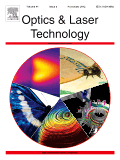
OPTICS AND LASER TECHNOLOGY
Connecting Theory and Practice in OpticsOPTICS AND LASER TECHNOLOGY, published by Elsevier Science Ltd, is a premier journal dedicated to advancing knowledge in the fields of optics and laser applications. With its impressive Q1 rankings across three critical categories—Atomic and Molecular Physics, and Optics; Electrical and Electronic Engineering; and Electronic, Optical and Magnetic Materials—the journal stands at the forefront of scientific discourse, boasting a significant impact factor that underscores its relevance. Since its inception in 1970, the journal has consistently provided a platform for the dissemination of cutting-edge research, key innovations, and reviews that influence both academic study and practical applications. Although it currently does not have open access options, its rigorous peer-review process and inclusion in esteemed indexing services make it a valuable resource for researchers, professionals, and students seeking to stay informed about the latest developments in optics and laser technology. The journal’s ongoing commitment to quality research ensures it remains a vital publication for those engaged in this dynamic field, with a converged projection extending through 2025.
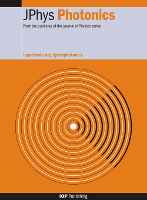
Journal of Physics-Photonics
Empowering Discoveries through Open AccessJournal of Physics-Photonics, published by IOP Publishing Ltd in the United Kingdom, is an esteemed Open Access journal that has been at the forefront of research in the field of photonics since its inception in 2018. With an impressive portfolio, the journal has achieved Q1 ranking in 2023 across multiple disciplines, including Atomic and Molecular Physics, Electrical and Electronic Engineering, and Electronic, Optical, and Magnetic Materials. This positions it among the leading journals in these areas, reflecting its significant influence and contribution to advancing knowledge and innovation. The journal aims to disseminate high-quality research findings that encompass a wide range of topics in photonics, promoting interdisciplinary approach that fosters collaboration among researchers, professionals, and students. With its commitment to open access, Journal of Physics-Photonics ensures that groundbreaking research is accessible to all, empowering a global audience to engage with and benefit from the latest advancements in photonic technologies.

Journal of Infrared Millimeter and Terahertz Waves
Exploring the Dynamics of Millimeter and Terahertz WavesJournal of Infrared Millimeter and Terahertz Waves, published by Springer, is a pivotal academic outlet in the realms of condensed matter physics, electrical and electronic engineering, instrumentation, and radiation, with an impressive impact factor underscoring its relevance in contemporary research. This journal, with both ISSN 1866-6892 and E-ISSN 1866-6906, offers open access to its articles, ensuring that the latest findings are widely disseminated and accessible to the global scientific community. Ranked in the Q2 quartile across multiple categories, including a notable 9th percentile ranking in radiation within the Scopus database, this journal serves as a significant platform for researchers and professionals. With a publication history spanning from 2008 to 2024, it continues to enrich the field with high-quality research articles, reviews, and insights. The journal's commitment to fostering innovation and interdisciplinary collaboration makes it an essential resource for anyone involved in the investigation and application of infrared, millimeter, and terahertz technologies.

Journal of Biophotonics
Exploring Innovations in Imaging and DiagnosticsJournal of Biophotonics is a prestigious academic journal published by WILEY-V C H VERLAG GMBH in Germany, dedicated to advancing the field of biophotonics through high-quality research. With an ISSN of 1864-063X and an E-ISSN of 1864-0648, this journal is recognized for its contributions within diverse categories, including biochemistry, genetics, molecular biology, chemistry, engineering, materials science, and physics, earning a commendable Q2 ranking in several of these fields as of 2023. The journal aims to bridge the gap between theoretical research and practical applications, fostering interdisciplinary collaboration that is critical for innovations in imaging, diagnostics, and therapeutics. Researchers, professionals, and students alike will find the Journal of Biophotonics invaluable for staying informed about the latest developments and breakthroughs in this dynamic field, making it a cornerstone for knowledge dissemination and scholarly discourse from its inception in 2008 and continuing through 2024.
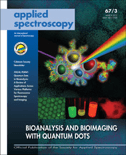
APPLIED SPECTROSCOPY
Advancing the Frontiers of SpectroscopyApplied Spectroscopy, published by SAGE Publications Inc, is a leading journal in the field of spectroscopy and instrumentation, with a legacy dating back to 1970. This esteemed journal, recognized within the Q2 category for both Instrumentation and Spectroscopy in 2023, provides critical insights and advancements that cater to a wide audience of researchers, professionals, and students. With its Scopus rankings placing it in the top 20% of publications in its respective fields, Applied Spectroscopy stands out for its rigorous peer-reviewed content that drives innovation in analytical techniques and applications. Though not an open-access publication, readers can access a wealth of research articles, reviews, and experimental findings that enrich the scientific discourse in spectroscopy. With a focus on enhancing the understanding and practical applications of spectroscopy, this journal is an essential resource for anyone engaged in this dynamic and evolving discipline.

Methods and Applications in Fluorescence
Bridging Disciplines Through Fluorescence ExcellenceMethods and Applications in Fluorescence is a premier academic journal published by IOP Publishing Ltd, dedicated to the interdisciplinary study of fluorescence techniques and their applications across various scientific fields. With a distinguished impact factor and categorized in the Q2 quartile for 2023 in multiple domains including Atomic and Molecular Physics, Optics, Instrumentation, and Materials Science, this journal plays a crucial role in advancing research and innovation in the field. The journal's scope encompasses a rich array of methodologies and applied studies, fostering collaboration between researchers and professionals aiming to push the boundaries of fluorescence sciences. With its commitment to rigorous peer review and open dissemination of knowledge, Methods and Applications in Fluorescence is essential for anyone involved in fluorescence-related research or applications, offering insightful contributions that drive the field forward. The journal is accessible to academics from around the globe, ensuring dissemination of valuable findings and methodologies from 2013 to 2024 and beyond.

OPTICS COMMUNICATIONS
Fostering Innovation in the World of OpticsOptics Communications, published by Elsevier, is a prestigious international journal that focuses on the dynamically evolving fields of optics and photonics. With its ISSN 0030-4018 and E-ISSN 1873-0310, this journal has made significant contributions to the fields of Atomic and Molecular Physics, Electrical and Electronic Engineering, Electronic, Optical and Magnetic Materials, and Physical and Theoretical Chemistry, consistently ranking in the Q2 quartile across these categories for 2023. The journal, based in the Netherlands, is recognized for its rigorous peer-review process and aims to publish high-quality research articles that advance knowledge and applications in optical communication technologies. Although it operates under a subscription model, the insightful research published here plays an essential role in informing the work of researchers, professionals, and students alike. With a history dating back to 1969 and spanning well into 2025, Optics Communications remains a crucial resource for cutting-edge developments in optics, catering to a global audience dedicated to innovation in this pivotal science.
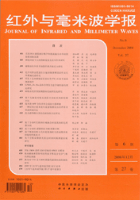
JOURNAL OF INFRARED AND MILLIMETER WAVES
Unveiling New Horizons in Infrared and Millimeter WavesJOURNAL OF INFRARED AND MILLIMETER WAVES is a pivotal peer-reviewed journal published by SCIENCE PRESS, dedicated to advancing research in the fields of atomic and molecular physics as well as optics. With an ISSN of 1001-9014, this journal has established itself as an open-access platform since 2001, facilitating the dissemination of high-quality research findings to a global audience. The journal serves as a crucial resource for researchers, professionals, and students alike, spanning a converged period from 1991 to 2024. While currently positioned in Quartile 4 within its respective category, and ranked #184 out of 224 in Scopus for its impact in atomic and molecular physics, the journal remains committed to promoting innovative studies and methodologies in the underrepresented yet vital area of infrared and millimeter wave technologies. Based in Beijing, China, the journal seeks to attract cutting-edge research that explores new horizons in both theoretical and experimental domains, thereby contributing to the broader scientific community and fostering collaboration among scholars worldwide.
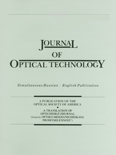
JOURNAL OF OPTICAL TECHNOLOGY
Transforming Knowledge into Optical SolutionsJOURNAL OF OPTICAL TECHNOLOGY, published by the Optica Publishing Group, serves as a vital resource for researchers and professionals in the fields of optical technology and related disciplines. Established with a commitment to advancing knowledge, this journal spans a broad spectrum of topics, including applied mathematics, atomic and molecular physics, and various engineering disciplines, with a converged publication period from 1995 to 2024. Although it currently holds a Q4 ranking across multiple categories in 2023, it is an important platform for innovative research ideas in a rapidly evolving field. The absence of Open Access may guide readers to explore alternative access options through institutional subscriptions. The journal’s ISSN is 1070-9762 and its E-ISSN is 1091-0786, ensuring accessibility for a global audience. As a publication aimed at fostering scholarly communication, it invites contributions that highlight emerging trends and novel developments in optical technology, catering to a multifaceted audience of researchers, professionals, and students.

Journal of the European Optical Society-Rapid Publications
Pioneering Quick Communication in Optical SciencesJournal of the European Optical Society-Rapid Publications, with ISSN 1990-2573 and published by EDP Sciences S A, is a premier open access journal dedicated to advancing the field of optics and photonics since its inception in 2006. Based in France, this journal serves as a vibrant platform for researchers, professionals, and students to disseminate their findings quickly and efficiently. Achieving a commendable Q3 ranking in Atomic and Molecular Physics and Optics (2023), it reflects a growing impact within the scientific community, despite currently holding a 33rd percentile rank among similar publications in the realm of Physics and Astronomy. The journal fosters an environment of rapid communication and collaboration, making it an invaluable resource for those interested in the latest developments and innovations in optical sciences. With open access ensuring broad visibility for all published work, the Journal of the European Optical Society-Rapid Publications is positioned as a key contributor to enhancing the understanding and application of optical technologies.